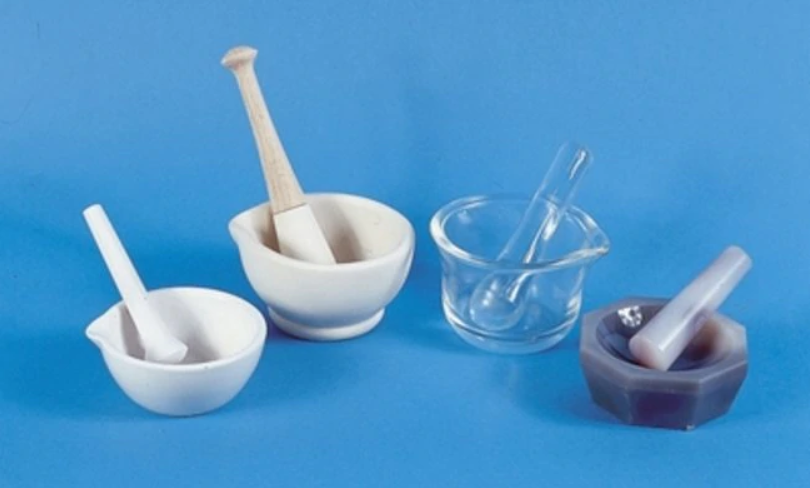Mortars and Pestles
![]()

Mortars and pestles are implements for grinding or homogenising a wide range of materials to a paste, slurry or powder. The mortar is a steep-sided bowl which holds the material to be processed, and the pestle the blunt stick-shaped tool which pounds or grinds the material to the required consistency against the inside of the bowl.
Mortars and pestles have been used since ancient times, but they still find widespread use today in the laboratory for grinding biological or geological samples in readiness for further analysis, for grinding and mixing chemical compounds, in the kitchen for food preparation, and in pharmacies to produce ointments and other medicinal preparations.
Many mortars and pestles are worked by hand, but labour-saving motor-driven models are also available, which offer a more consistent grinding action, often with adjustable speed, pressure and timer controls.
What is the best material for a mortar and pestle?
Mortars and pestles can be made of porcelain, natural stone (granite, agate or marble), borosilicate glass, or other specialty materials such as hardened steel, tungsten carbide, melamine, or sintered aluminium oxide. Porcelain mortars and pestles are the most commonly used, and are usually glazed on the exterior and on the handle for easy cleaning, but have unglazed, rougher working surfaces to allow for exceptionally fine grinding. Borosilicate glass models are especially useful in the laboratory, as they offer the highest resistance to thermal shock and chemical corrosion. Agate and alumina versions offer minimal sample contamination.